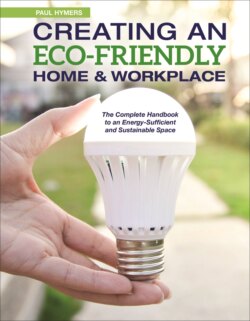Читать книгу Creating an Eco-Friendly Home & Workplace - Paul Hymers - Страница 37
На сайте Литреса книга снята с продажи.
The negative effects of night-time lighting
ОглавлениеThe US American Medical Association (AMA) report ‘Human and Environmental Effects of Light Emitting Diode Community Lighting’, published in 2016, concluded that white LED street lighting patterns may, among other things, also contribute to the risk of chronic disease in the populations of cities in which they have been installed. It went on to recommend ‘minimizing and controlling blue-rich environmental lighting by using the lowest emission of blue light possible’ in order to reduce potential negative effects on human health.
Concerns about blue light reach far beyond our health. Outdoor lighting with strong blue content is likely to worsen sky-glow because it has a significantly longer reach than lighting consisting of less blue, and outdoor lighting retrofits using 4000 K or higher lamps could result in a 2.5 per cent increase in light pollution. It isn’t just LEDs; the cool blue white light from metal halide lamps also produce glare at night, and suggestions have been made that they may even compromise human vision. The retrofitted street lamp outside my home is capped to ensure it does not indirectly light upward, but even so, at about 30 m from the my front bedroom window and on the same level, the glare from it lights the room at night and blocks out the chance of seeing the night sky clearly. Garden floodlights that face down on the garden sometimes also face down on the street causing a nuisance to neighbours and potential road safety problems for motorists and pedestrians alike. In the natural world, blue light at night has been shown to adversely affect wildlife behaviour and reproduction. This is particularly true in cities, which are often stopover points for migratory species.
Unfortunately, light at these higher temperatures is still slightly more energy efficient, producing more lumens per circuit watt, but it comes at a price beyond the electricity bill, and as hence, we should always choose warm LEDs over cool for external lighting.
Clearly we need to do more to appreciate the benefits of darkness outside our homes by designing garden lighting intelligently.
• Only use warm-white or coloured LEDs (Colour temperature less than 3,000 K; S/P ratio less than 1.2) to reduce blue light emissions.
• Look for products with controls like daylight sensors, dimmers, timers and PIR motion sensors that ensure the lights are on only when needed.
• Make sure your lights are turned off during overnight hours and not left on.
• Avoid the temptation to over-light. Ever since garden floodlights have been produced, the desire to light our gardens like sportsstadiums has been with us and now with the low energy and higher luminous efficiency of LED floodlights, it is easy to over-light.
• Use accent lighting rather than flood lighting to only light the exact space necessary for security, daily function or creative garden lighting.
• Make sure the creative uplighting of plants is with warm-white or warm-coloured ultra-low lumen output lamps to ensure the light does not continue on beyond the plant itself to affect wildlife.
